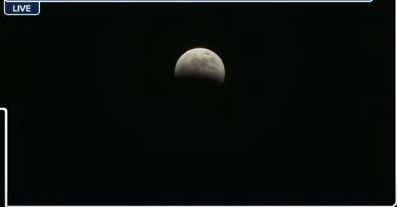
A stunning celestial event is set to light up the night sky tonight – the Blood Worm Moon total lunar eclipse. Skywatchers across the United States will have a chance to witness this rare phenomenon, but weather conditions may impact visibility in some regions.
When and Where to Watch the Eclipse
The total lunar eclipse will begin in the early hours of Friday morning. Here’s the timing based on different time zones:
Eastern Time (ET): Begins at 2:26 AM
Pacific Time (PT): Begins at 11:26 PM (Thursday night)
Greenwich Mean Time (GMT): Begins at 06:26 AM
The eclipse will last for a total of 66 minutes, giving skywatchers a good window to witness this breathtaking sight.
Best Places to Watch the Blood Worm Moon
Most of the U.S. will have at least a partial view of the eclipse, but some areas will have clearer skies than others. The best weather conditions for viewing are expected in:
Lower Great Lakes and Ohio Valley
Central Plains (including parts of Nebraska, Kansas, and Oklahoma)
Texas (Lone Star State)
These regions are expected to have minimal cloud cover, offering an unobstructed view of the lunar spectacle.
Areas with Poor Visibility Due to Weather
Unfortunately, some areas will experience heavy cloud cover and precipitation, making it difficult to see the eclipse. These include:
Northern and Central Rockies: A storm system will bring clouds and precipitation from Montana down to western New Mexico.
Pacific Coast (Washington, Oregon, and Northern/Central California): A marine layer of low clouds is expected to obscure the view.
Gulf Coast (Louisiana, Mississippi, Alabama, Florida Panhandle, and South Florida): Low clouds will likely block visibility.
I-95 Corridor (Virginia to Maine): An offshore weather system will bring low clouds, affecting cities like Philadelphia, New York, and Boston. However, driving slightly inland may provide clearer views.
Sky Conditions: What to Expect
To help eclipse watchers, we’ve categorised different regions based on expected cloud cover:
GOOD: Less than 30% cloud cover; mostly clear skies.
FAIR: 30-70% cloud cover; occasional breaks in the clouds may allow glimpses of the moon.
POOR: Over 70% cloud cover; little to no visibility of the eclipse.
How to Check the Latest Weather Updates
For the most accurate and up-to-date weather conditions in your area, check the following sources:
National Weather Service (NWS): Visit your local NWS office website for real-time weather forecasts.
Satellite Imagery: The GOES 16 weather satellite provides up-to-date cloud coverage images.
Missed This One? When’s the Next Lunar Eclipse?
If clouds block your view tonight, don’t worry! The next total lunar eclipse visible from North America will occur on March 3rd, 2026. Mark your calendars for another chance to witness this celestial wonder.
Final Thoughts
Whether you’re lucky enough to have clear skies or need to wait until 2026, lunar eclipses remain one of the most mesmerising astronomical events. If you do manage to capture a glimpse, be sure to enjoy the beauty of the Blood Worm Moon!
Happy skywatching!
